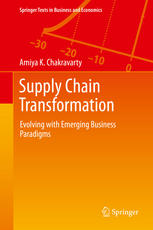

Most ebook files are in PDF format, so you can easily read them using various software such as Foxit Reader or directly on the Google Chrome browser.
Some ebook files are released by publishers in other formats such as .awz, .mobi, .epub, .fb2, etc. You may need to install specific software to read these formats on mobile/PC, such as Calibre.
Please read the tutorial at this link: https://ebookbell.com/faq
We offer FREE conversion to the popular formats you request; however, this may take some time. Therefore, right after payment, please email us, and we will try to provide the service as quickly as possible.
For some exceptional file formats or broken links (if any), please refrain from opening any disputes. Instead, email us first, and we will try to assist within a maximum of 6 hours.
EbookBell Team

0.0
0 reviewsToday, supply chain transformation for creating customer value continues to be a priority for many companies, as it enables them to gain a competitive advantage. While value creation is shaped by external drivers such as market volatility, technology, product and service offering and disruption, it can be stymied by the internal stresses arising from the need to minimize costs, limitations in process redesign, waste minimization and the unavailability of knowledge capital. Therefore, for companies to survive and prosper, the relevant questions to ask would be how to identify the external/internal forces driving changes and how to map the business drivers to the attributes of transformation.
While the contemporary supply chain is well-structured, the evolving economic system is causing disruptions to this structure. The emergence of novel business paradigms – non applicability of the traditional laws of supply and demand, dominance of negative externality effects and anomalies of high growth rate coexisting with high supply side uncertainty – must be recognized in transforming supply chains. For example, healthcare delivery and humanitarian relief do not follow known supply/demand relationships; the negative externality effects are increasing sustainability concerns; and emerging economies, with dysfunctional business infrastructure, must manage high growth rates.
This book delves into the transformation issues in supply chains and extends the concepts to incorporate emerging issues. It does so through ten chapters, divided into three sections. The first section establishes the framework for transformation, while the second focuses on the transformation of current chains in terms of products, processes, supply base, procurement, logistics and fulfillment. Section three is devoted to capturing the key issues in transforming supply chains for emerging economies, humanitarian relief, sustainability and healthcare delivery.
This work will be of interest to both academics and industrial practitioners and will be of great value to graduate students in business and engineering. It raises many questions, some provocative and provides many leads for in-depth research. Several approaches are suggested for new problems along with a discussion of case studies and examples from different industries.